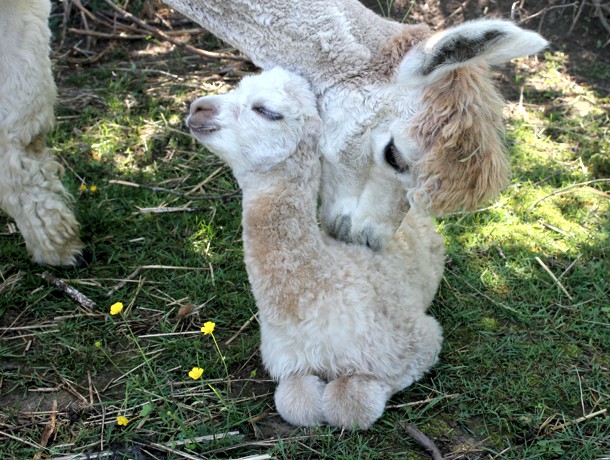Breed Standards
An Association on the move? and we know where we're going!
As an introduction one of the first questions that must be satisfactorily answered is – what is a breed? There are many answers but for our purposes it should be what is used in conjunction with the Animal Pedigree Act. Namely – "A breed is a population of animals with a common history and origin. There is not a standard definition to which everyone would agree. However, two important characteristics are that they must have unique distinguishing characteristics and be genetically stable from generation to generation."
A breed standard is a term that is used in several ways – unfortunately not always consistently. In breed registries in Canada it is used as follows – "Breed standards are the essential trademark characteristics of a breed such as colour, coat pattern, horns, size, conformation, etc. Additional breed standards may include performance characteristics such as growth rate or milk production". In judging however, breed standards have been used as equivalent to a "Standard of perfection", "true type" or an ideal for the breed.
Given the recent, ongoing and sometimes acrimonious discussions on breed standards in the international alpaca community, particularly in the U.S. where they are non-existent – why do we in Canada have published breed standards? While one of the arguments in the U.S. against having a breed standard is that it discourages what may be potentially useful genetic diversity in a population the antithesis of this is the very reason that we do have a breed standard. In 1974, the Department of Agriculture created an advisory committee with the responsibility to establish criteria for the eligibility of new breeds of livestock in Canada. The committee suggested that new breeds be accepted which met the following criteria "A population of animals that produces progeny possessing... a good degree of genetic stability as evidenced by phenotypic uniformity and performance levels...". The key consideration for a distinct breed in Canada is the requirement for genetic stability. Without genetic stability you have what is termed an evolving breed This may in time become recognised as a distinct breed but only if the phenotypic characteristics of multiple generations can be assessed and found to be uniform.
When the CLAA applied to Agriculture Canada to become a breed association we had to show the Ministry that each breed we were representing came from a distinct common foundation population and exhibited recognisable breed characteristics in a uniform fashion. Breed standards were therefore the basis for recognition of the initial foundation stock, which was essential for the recognition of a distinct breed under the Animal Pedigree Act. Both llamas and alpacas have a written physical description that establishes a minimum requirement or range for specific distinguishing characteristics of the breed. Importantly since one of the requirements of the Animal Pedigree Act is that all registered animals must show a relationship to the foundation population the continued screening (breeder assertion that they meet the breed standard) of animals prior to being registered is essential. This maintains the desired characteristics as defined by the adopted standard.
The breed standards we have today were obviously developed from the screening criteria applied to the original imported animals. The overriding consideration in developing these screening standards was to create a series of objective criteria that would check as many functionally important and/or potentially heritable defects as possible. For each of the characteristics a minimum level of acceptability was defined (hence the term used on the registration application – minimum breed standards). In Canadian breed registries breed standards most often refer to the range of trait expression and the absence of specific genetic conditions considered acceptable for the breed rather than the ideal animal. However, while some traits of course are definitive (simple presence or absence is a disqualifier to registration) some are not. One danger in simply defining and relying on a minimum set of standards is the implication that if for instance an animal's legs pass the standard (deviation at a level not greater than a proscribed amount) they therefore must be good. In fact they may not meet the goal that all breeders should be trying to achieve – straight legs. This is the fundamental difference between minimum breed standards and defining breed types (where the ideal animal is described). As a consequence the CLAA breed standards do make reference to ideal llamas and alpacas in certain areas to avoid the problem implications that occur when only a minimum standard is referenced.
The initial screening of imported or foundation stock animals did of course not guarantee that all animals imported into Canada were free of all structural and/or heritable defects. One of the obvious limitations of screening is the inability to detect carriers for specific heritable defects in structurally normal animals. While not perfect the system in use by the CLAA does provide a good method for the potential elimination of many animals with undesirable traits in our purebred registered herd while at the same time maintaining a certain degree of phenotypic uniformity as required by their distinct breed status. Continued application of this process provides an important step in developing a strong Canadian registry that can over time be relatively free from serious heritable defects and structural unsoundness. Importantly the recognised use by Canada of these breed standards, by the International camelid community, will add value to the Canadian registry and confidence to any serious camelid breeder looking to improve the quality and predictability of their herds.

Congenital Disqualifiers
Learn more about all the Congenital Disqualifiers.
